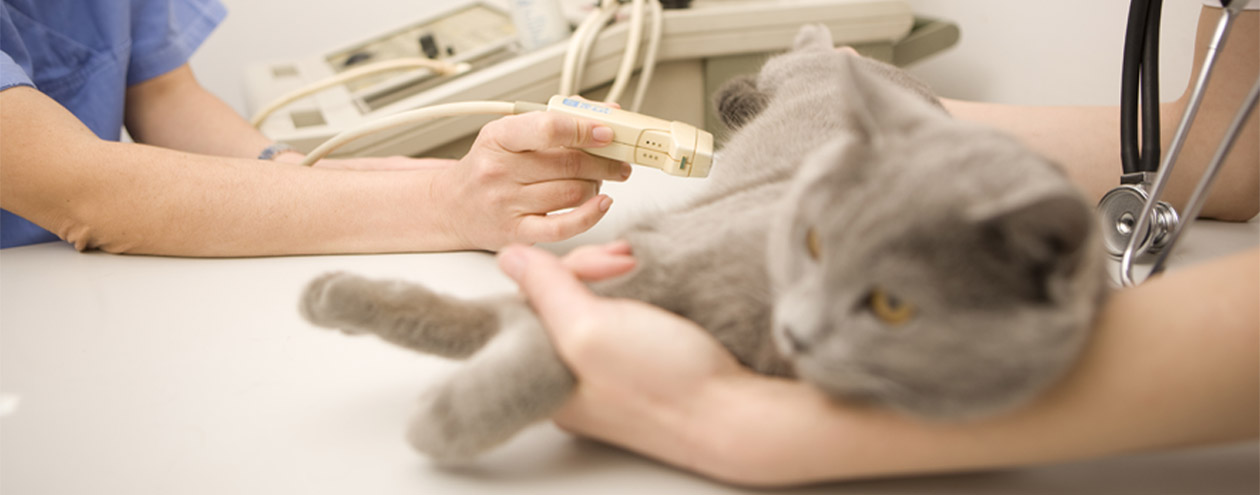
WHY IS ULTRASOUND A USEFUL DIAGNOSTIC TEST?
Ultrasound is a safe, repeatable and non-invasive way for our vets to have a look at what’s going on inside your pet’s body. It’s a great way to get a better look at organs such as their liver, spleen, kidney, bladder and intestines.
HOW DOES ULTRASOUND WORK?
The ultrasound machine sends sound waves into your pet’s body and then listens for the echoes – the machine then uses these echoes to make a picture of the inside of your pet! Don’t worry, these sound waves are too high in pitch for us, or any of our patients, to hear and produce no harmful effects as a diagnostic tool.
WHY MIGHT MY PET NEED AN ULTRASOUND EXAM?
Your vet might recommend that your pet has an ultrasound exam for the following reasons:
- Abnormal bloodwork
- Vomiting or diarrhea that has lasted for a long time
- Weight loss with no change in eating habits
- Chronic infections
- Change in urinary habits
- Baseline ultrasound for future examination (geriatric patients)
- Recheck a previous problem
- Cancer staging
- Fluid in chest or abdomen
- Pregnancy
- Pre-surgical
- To permit biopsy
- To look for bleeding if your pet has suffered trauma (like if they’ve been hit by a car)
WHAT WILL AN ULTRASOUND EXAM TELL MY VET?
Ultrasound allows your vet to assess your pet’s internal organs for their size, shape, location, texture and blood supply. Unfortunately, ultrasound does not always give us a clear picture of how well the specific organ is working- other tests such as bloodwork or additional imaging may help determine this.
It is not uncommon to find “masses” in the organs being examined by ultrasound although many of these turn out to be normal changes that occur as patients get older. It cannot always be determined by ultrasound alone if the mass is benign (non-cancerous) or malignant (cancer). Your vet will look at your pet’s medical history and current concern, as well as the entire ultrasound exam to make a diagnosis and any recommendations for further tests.
Further tests may include an ultrasound-guided aspirate of a mass found on ultrasound (obtaining a very small sample of the tissue with a needle), bloodwork, additional imaging, recheck imaging or surgery. You will always be contacted prior to any additional procedures.
WHAT DOES MY PET HAVE TO BE SHAVED?
To obtain the best ultrasound images possible, good contact between the ultrasound probe and your pet’s skin is necessary. Sound waves don’t like to travel through hair! Your pet will need to have their fur / hair shaved from the area being scanned. You can expect the fur to grow back in ~3-4 weeks. If it is cold weather and your pet spends time outdoors, you may wish to provide a sweater or additional bedding while their fur re-grows.
